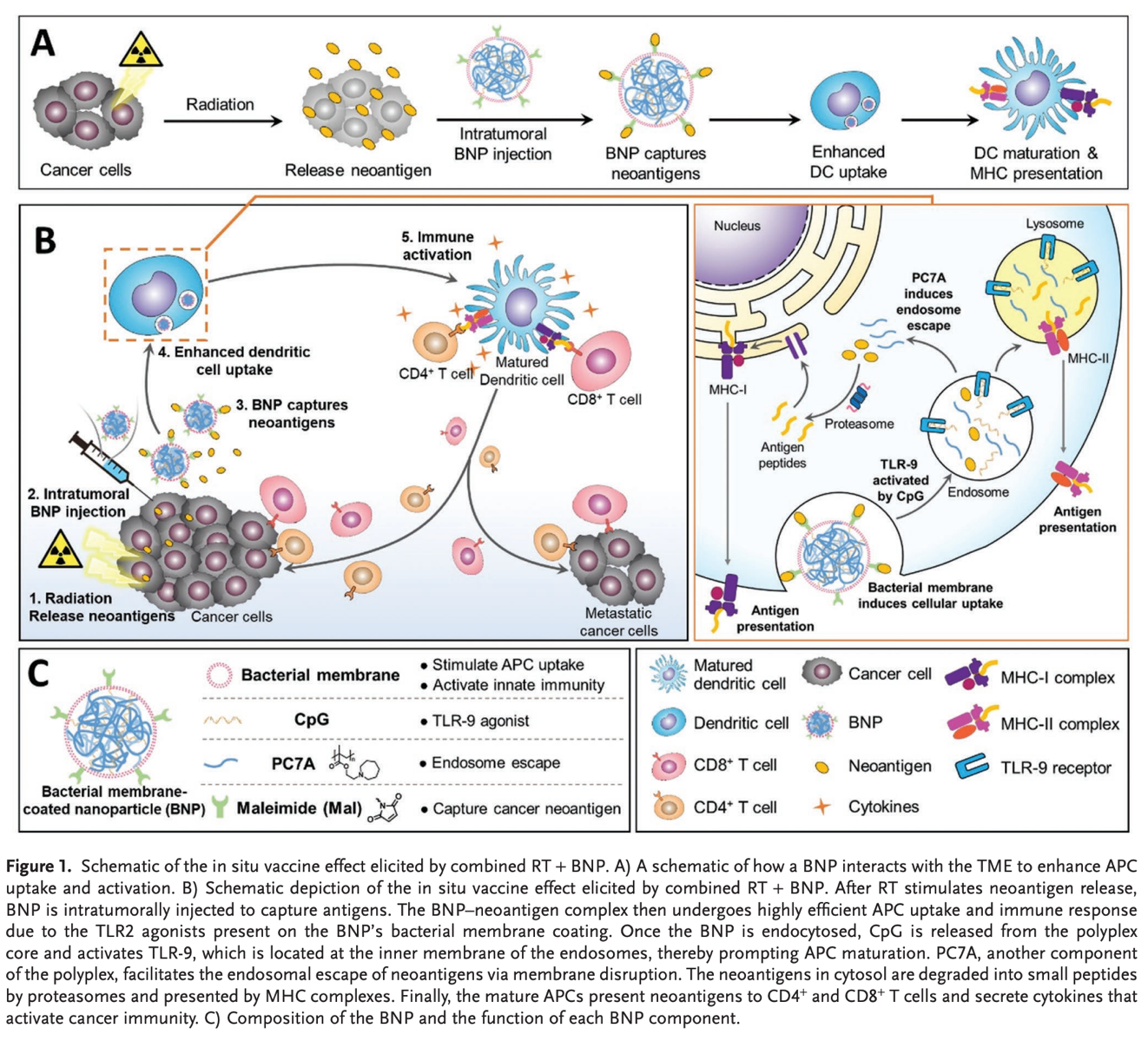Therapeutics & Vaccines

Bacterial Membrane Nanoparticles as an Immunotherapy System for Cancer Treatment
WARF: P180331US02
Inventors: Shaoqin Gong, Zachary Morris, Mingzhou Ye, Ravi Patel, Paul Sondel
The Wisconsin Alumni Research Foundation (WARF) is seeking commercial partners interested in developing improved cancer immunotherapy treatments. UW–Madison researchers have engineered a novel nanoparticle that elicits an improved immune response in select melanomas for significant tumor suppression.
Overview
Cancer immunotherapy – a therapy that stimulates and employs the body’s own immune system – is one of the most promising new approaches for treating cancer. Despite its tremendous potential, it shows limited effectiveness on patients with immunogenically “cold” tumors, as these tumors remain “hidden” from immune cells. Radiation therapy has been shown to improve the immunotherapy by turning a “cold” tumor into a “hot” one, thereby highlighting tumor cells for immune cell recognition. Significant effort has gone into stimulating immune cells to recognize tumor cells, but available methods are limited and often result in modest therapeutic benefit.
The Invention
UW–Madison researchers have engineered a bacterial membrane-coated nanoparticle (BNP) capable of acting as a cancer treatment/vaccine. The BNP consists of a nanosized polyplex made up of a PC7A polymer, a CpG oligonucleotide inside the bacterial membrane and surface attached maleimide (Mal) groups. PC7A provides both a pH responsiveness, which allows for membrane interactions at neutral pH, and subsequent endosomal escape once internalized into the cell. CpG functions as an immunostimulatory molecule (as a toll-like receptor agonist). And Mal groups decorate the surface of the BNP to capture tumor remnants created by radiation treatment, accelerating cellular recognition of the tumor.
In combination with radiation therapy, the inventors show that BNP treatment led to significant tumor growth suppression and enhanced survival rate in a model of a B78 melanoma tumor, a hard cancer to treat. By enabling patients’ immune systems to recognize the unique antigens on their own tumors, this combination therapy may represent a universal approach to achieve personalized cancer immunotherapy using off-the-shelf agents.
In combination with radiation therapy, the inventors show that BNP treatment led to significant tumor growth suppression and enhanced survival rate in a model of a B78 melanoma tumor, a hard cancer to treat. By enabling patients’ immune systems to recognize the unique antigens on their own tumors, this combination therapy may represent a universal approach to achieve personalized cancer immunotherapy using off-the-shelf agents.
Applications
- Improved recognition of host immunity during cancer immunotherapy
Key Benefits
- In combination with radiation, BNP suppresses tumor growth and improves survival rate in B78 melanoma mouse model.
- BNP has no observable systemic toxicity.
- BNP production is easier and more cost-effective than similar nanoparticle approaches.
Additional Information
For More Information About the Inventors
Tech Fields
For current licensing status, please contact Rafael Diaz at [javascript protected email address] or 608-960-9847
Figures
